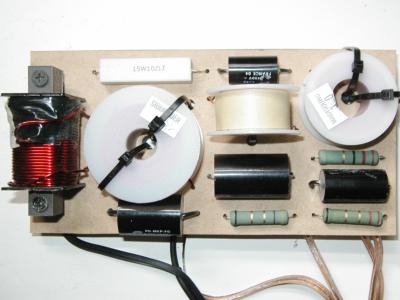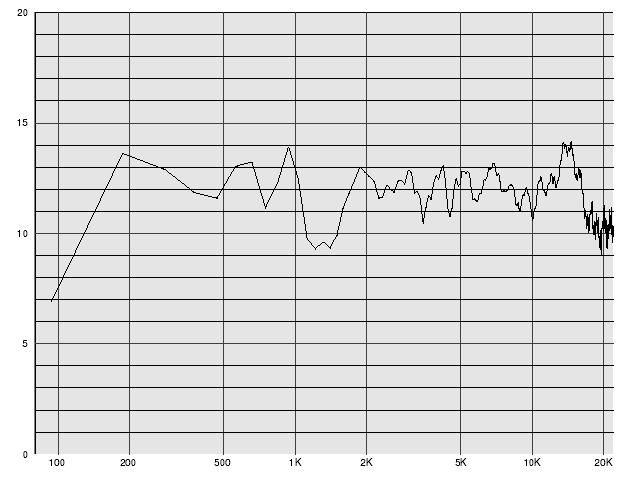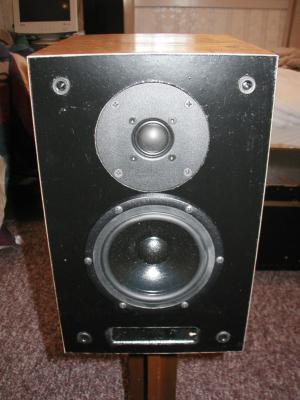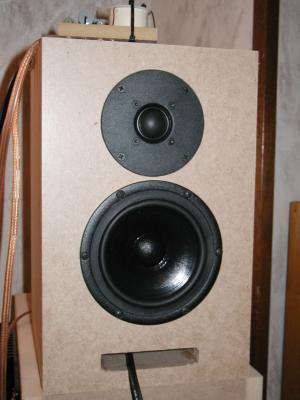
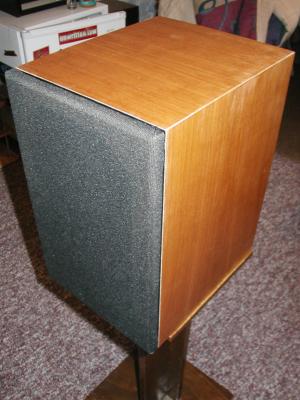
Introduction
The Calypso is a small bookshelf speaker design using the Seas CA15RLY(H1216) 5" woofer and the Seas 27TDFC(H1189) fabric dome tweeter. The Calypso is the smallest speaker in my current collection of designs and with it's front port it is a true bookshelf design. This project was designed to be a replacement for my parents' Pinnacle PN5+ bookshelf speakers whose response was far from flat with a +/-5 dB fluctuation across the frequency and an overexaggerated BBC dip near the crossover frequency (and yes, the tweeter's phase was correct). I would have to say the Calypsos are a significant improvement over the Pinnacle's especially with regards to the midrange clarity. During the design phase I ran across the Snell Acoustic's K7 design which appears to use the same CA15/27TD(F)C combination but sells for about $1200 a pair. At under $300 a pair, the Calypsos are quite a bargain. The crossover for the Calypsos was inspired by Dennis Murphy's CAOW1 design which also uses the CA15RLY woofer (I used the same woofer filter, but modified the tweeter filter to suit the 27TDFC).
Drivers
Seas 27TDFC(H1189)
27mm High Definition precoated fabric dome tweeter with a wide, soft
polymer surround. The dome and surround materials give high consistency
and excellent stability against variations in air humidity. The voice coil is
wound on an aluminum voice coil former with adequate ventilating holes to
eliminate noise from internal air flow. The voice coil is immersed in low
viscosity magnetic fluid, for high power handling capacity and simplified
crossover design. A stiff and stable rear chamber with optimal acoustic
damping allows 27TDC to be used with moderately low crossover
frequencies. The chassis is precision moulded from glass fibre reinforced
plastic, and its front design offers optimum radiation conditions.
Seas CA15RLY(H1216)
The CA15RLY is a 15 cm (5'') cone driver, developed for use as a long throw
high fidelity woofer or woofer/midrange unit.
The classical coated paper cone gives a smooth extended frequency response
with a controlled roll off. The large magnet system, together with a very long
and light weight CCAW voice coil allow good coil excursion with low
distortion and good transient response.
The extremely stiff and stable injection moulded metal basket, keeps the
critical components in perfect alignment. Large windows in the basket both
above and below the spider reduce sound reflection, air flow noise and cavity
resonance to a minimum.
|
|
Cabinet Design
|
The Calypso cabinet is almost 11 liters in volume with a port tuning of around 48Hz which theoretically gives them an f3 of around 46Hz.
Based on the woofer's specs, the cabinet is a bit on the large side but this gives them a deeper bass response.
Since the cabinets are relatively small, I chose to go without internal bracing. I chose to put the port on the front so the speakers could be
placed against a wall or on a bookshelf. I used a piece of 1/8" masonite on the front baffle with a hole cut out for the tweeter in order to
flush mount the tweeter. I didn't use any gasket material around the tweeter frame because the masonite is not as thick as the tweeter
frame. Despite the fact that the tweeter frame is not completely flush with the baffle, there are no negative diffraction effects based on
my measurements. This particular pair of speakers included a front grill. The grill has some negative effects due to frame edge diffraction,
but the response variations aren't very severe. The grill introduces a few dips in the upper midrange and the grill cloth attenuates the
extreme high frequency range.
|
|
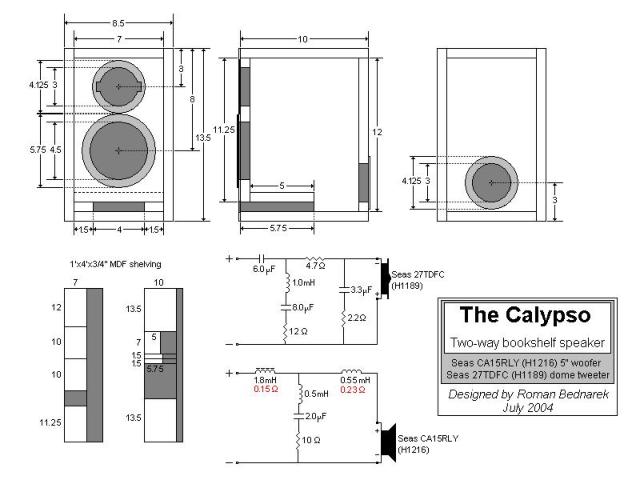
Crossover Design
The crossover for the Calypso was designed to produce 2nd order, 12dB per octave, slopes and uses quite a few components to accomplish this.
The woofer filter is nearly identical to Dennis Murphy's CAOW1 design and it seemed to work pretty well so I ended up using it for this design.
The tweeter filter is completely original and it provides the flattest reponse that I could attain with the 27TDFC tweeter. I used a steel core
inductor for the larger woofer inductor in order to reduce the amount of DC resistance in the circuit which boosts the bass response slightly. An
air core inductor would probably work well and may have less problems with saturation. Below is a picture of the crossover part layout that I used.
I mounted all of the parts on a piece of 1/2" MDF that is 4" wide by 8" long and is small enough to fit through the woofer hole. The crossover is
screwed to the inner back wall of the cabinet which gives it a good solid mount and allows it to be removed if I ever decide to upgrade parts or
modify the crossover. The inductors are all placed perpendicular to each other to minimize electromagnetic field interactions between them. The
parts are organized in such a way that no additional wire is needed to make the connections.
Performance
Below is a plot of the gated frequency response of the Calypso design. The gated measurement removes any room reflection influences at the
expense of lower frequency measurement resolution/accuracy. The measurement should be reliable from about 200Hz and up. Overall the
frequency response is pretty flat except for one noticeable dip centered around 1.4kHz which is present in the woofer's response. Even with the
dip, the frequency response is nearly +/-2dB from 200Hz to 20kHz. From what I've heard from other CA15 owners, the 1.4kHz dip is less severe
in other batches so you might get lucky if you decide to build a pair.
When I first began tweaking the crossover and listening to the Calypso, there was something about the CA15's midrange sound that bothered me
a bit. There seemed to be a lower midrange emphasis that colored their sound. However, when I soldered together the final crossover and moved
them to another room, the midrange problems seemed to disappear. I'm now very happy with them and would have to say they sound pretty darn
good, especially considering they cost less than $300 a pair to build. Also, the little 5" CA15RLY woofer plays pretty deep considering it's small
size. The soundstage isn't very deep, but they have excellent imaging. Instruments and vocals are well defined and localizeable. I'm pretty sure
the 2nd order crossover design helps in the imaging department because the Asterions and Hyperions, which both use 4th order crossovers, have
poorer imaging characteristics. They have a decent amount of detail but aren't overanalytical so poorer recordings are tolerable. The 27TDFC is
an excellent tweeter especially considering it costs less than $30. I would presume that these speakers would work quite well in a 5 channel
surround sound setup especially with DVD-Audio and SACD recordings.
Speaker Workshop Project File
The Speaker Workshop project file for this design is now available for download: Calypso.swd. This project file
includes gated measurements for the drivers at different listening axes (TA stands for "Tweeter Axis," BT stands for "Below Tweeter" and
WA stands for "Woofer Axis"). There are also farfield ungated measurements and nearfield measurements of the woofer as well as port measurements.
There's also a crossover network simulation based on measurements taken on axis with the tweeter. The file is about 3.3 MB so be patient if
you have a slower connection.
 |




